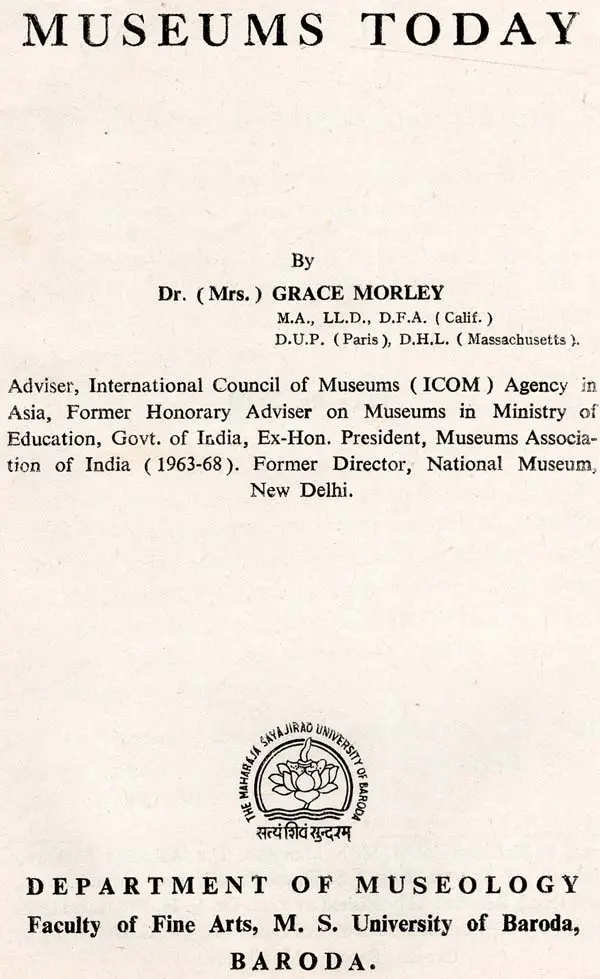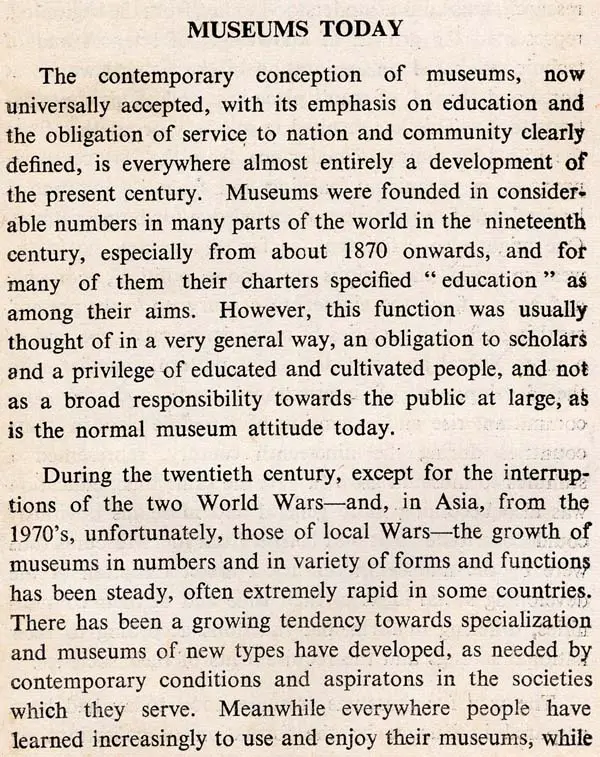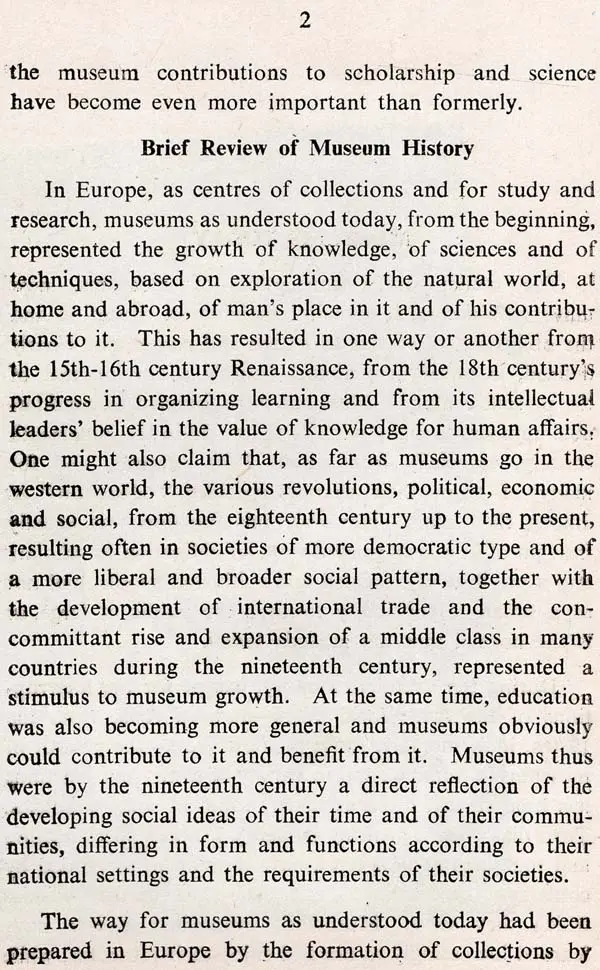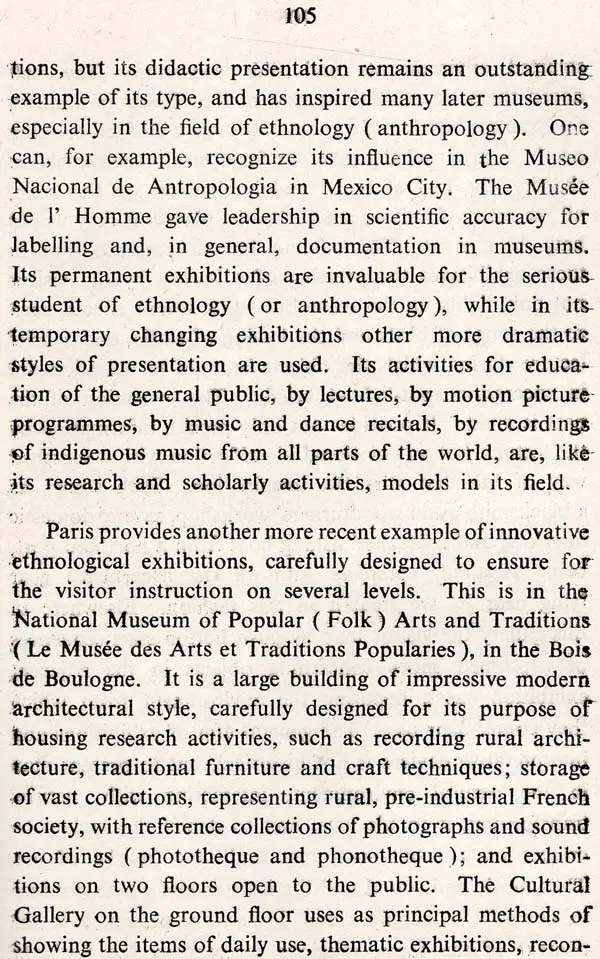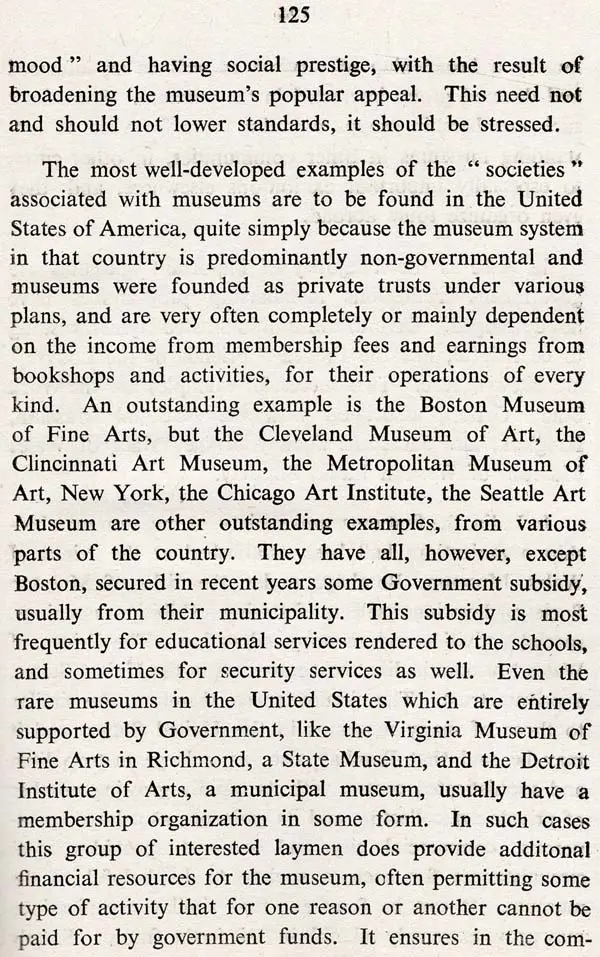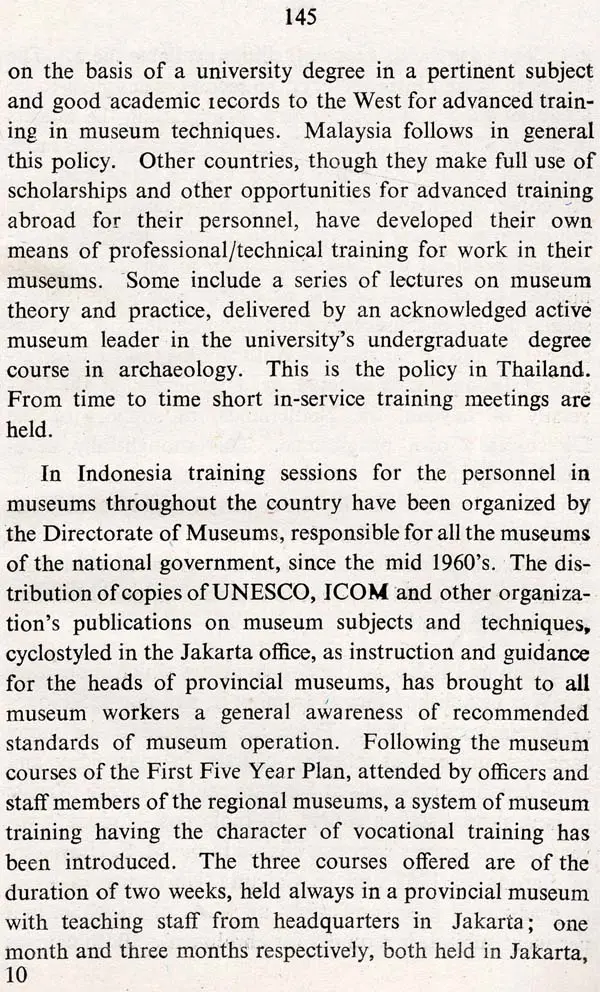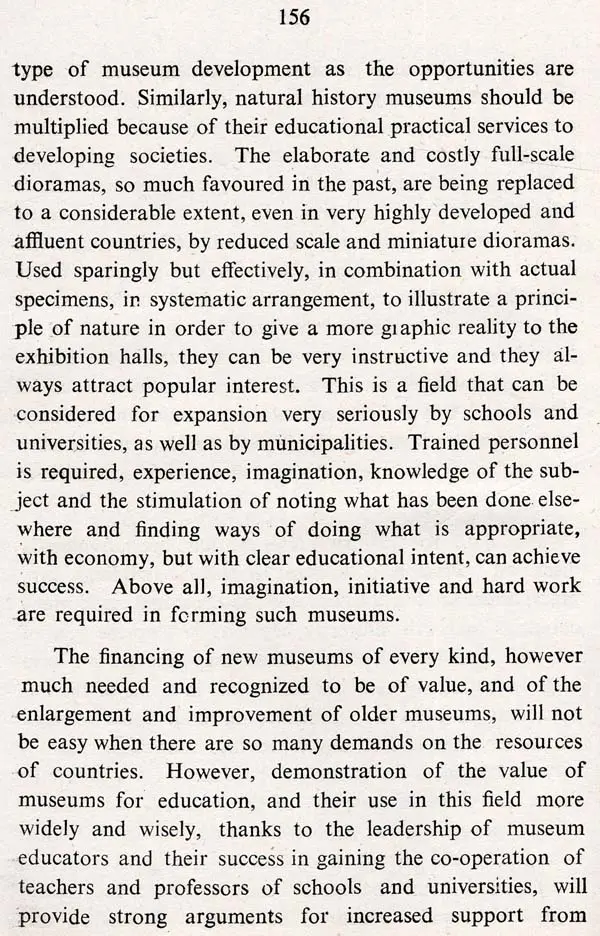
Museums Today (An Old & Rare Book)
Book Specification
| Item Code: | UAQ890 |
| Author: | Grace Morley |
| Publisher: | The Mahraja Sayajirao University of Barodra |
| Language: | English |
| Pages: | 173 |
| Cover: | PAPERBACK |
| Other Details | 7.00 X 5.00 inch |
| Weight | 150 gm |
Book Description
The text that follows is based on talks, followed by discussions, arranged on a number of occasions for the students of the Course in Museology of the M. S. University of Baroda. They were an attempt to summarize, for young people expecting to enter museum careers, the steps by which museum work has progressed toward becoming a profession, some important ways in which museums serve people today, and how the evolution of museums so far, and their obligations in a modern society are likely to continue their development during the next few decades. Some of the points touched upon here have come to attention in the course of discussions and informal con sultations with museum leaders. They have, therefore, been included as items on which it seemed information or comment might be of interest. The first section, Museums Today, reviews briefly the history of museums, and especially their development from the international point of view, since the last War, It endeavours to indicate the profession's own leadership and the factors in the international climate contributing to the contemporary role of museums.
In recognition of this booklet's origin and association with the Museology Course of the M. S. University of Baroda, started in 1952 as a Diploma Course and now an M.A. Course, examples and illustration from India will be cited from time to time. However, the present revision, deleting out-dated information, includes also references to museum s developments in other Asian countries. Everywhere there has been notable growth during the past three decades which promises to continue, as the role of museums in contemporary societies grows in importance, stimulated by international tourism, as well as by an encouraging increase in official recognition and support in most countries. However, in summing up general museum progress and aspirations emphasis falls often once more on India, because it offers generally so practical an example for developing countries. It is not so overwhelmingly modernized nor as securely affluent, as is Japan, which, in its admirable achievements in regard to museums, now rivals the most advanced countries of the West. Yet in variety of museum types, the high level of professional/technical operation, the importance of collections, including a few representing other parts of the world, the competence of its museum people and their leadership in museum development, as well as the obstacles they face and overcome, India can show valuable examples for other developing countries. The original edition of this booklet owed much to colleagues at the National Museum, New Delhi, who furnished information and suggestions. Their contribu tions have not been forgotten and are greatly appreciated. This new edition, up-dated and with a somewhat broader base, since references to museums in other countries of Asia have been added to the commentary on museums and conditions in India, has been encouraged and assisted by Professor Dr. V. H. Bedekar, Head, Museology Depart vi Many of the comments and suggestions in the text are based on what Indian and other Asian museum leaders The final section, Museum Prospects in Asia, reflects confidence in the ability and in the ambition for excellence in museum achievement, inspired by the earnest striving of the profession. This favourable feeling toward the future here, is confirmed by years of intimate contact with Asian museum colleagues.
Museums and People is based on personal observation and experience of how museums can serve their communities and nations. It refers to many aspects of museum educa tion as a subject of major importance to museums today, especially in the Asian countries, where it is obviously desirable that museums make all possible contributions to education at many levels, as well as to general public enlighenment in the fields of archaeology, arts and the sciences that they include. It likewise gives some attention to the people who operate museums and considers some of the circumstances that affect them. ment, Faculty of Fine Arts, M. S. University of Baroda. The author hopes that it may prove useful to his museology students, and also perhaps, to aspirants to the museum profession and to its junior members elsewhere. The generous interest of the M. S. University of Baroda in undertaking to publish it to replace the original edition, now out of print, is greatly appreciated and it is a pleasure here, while expressing thanks, to recall with satisfaction an association with the University dating from the early 1960's. have done or said. Though the approach to museum work is general, and emphasizes the place of international activity to some degree, Asia, its museums and its museum workers remain ever in mind. Asia is singularly blessed in its riches of archaeology and of the arts in museums, as well as in earnest museum workers. It remains only to put this wealth, evidence of past achievement and abilities, at the service of the present and the future, by making it contribute to the instruction and enjoyment of the public. Asian museum people recognize this challenge and are endeavouring to meet it as effectively as possible, in the ways suitable to their countries. Other kinds of museums to meet specific contemporary needs are being founded and developed. Excellent beginnings have been made by specialized museums and sound patterns have been set for further and wider services.
It is hoped that this small booklet, summarizing some aspects of museum work that seem important today, will be useful in extending to other museology students whatever benefits the group in Baroda derived from various meetings. As these talks, which provide its basis, were thought of as conversations between a veteran in the profession and young colleagues, and drew on them continually for the practical realities connected with the theory under discussion, it is pertinent to express thanks to the students and to their teachers for what may be quite honestly described as an informal collaborative exercise in exploring some aspects of the museum trade.
It is a great pleasure for the University to bring out a revised and up-dated second edition of this book. The earlier edition was well received and this has en couraged us to bring out this second edition. We are very thankful to Dr. Grace Morley, the author of the book, for undertaking the task of revising the book. With her vast experience of museums and her extensive travels she is the most competent person to write on 'Museums today'. Since the last edition was printed there have been tremendous advances in the various aspects of museology. Museums today are playing a greater role in the education and enjoyment of the people than before. It is through them that we can reach the vast masses of people and give them a glimpse into the history, art, culture, science and technology of a country. We who are at the receiving end must thank Dr. Morley for giving us a very interesting and a very readable book on MUSEUMS TODAY.
**Contents and Sample Pages**
